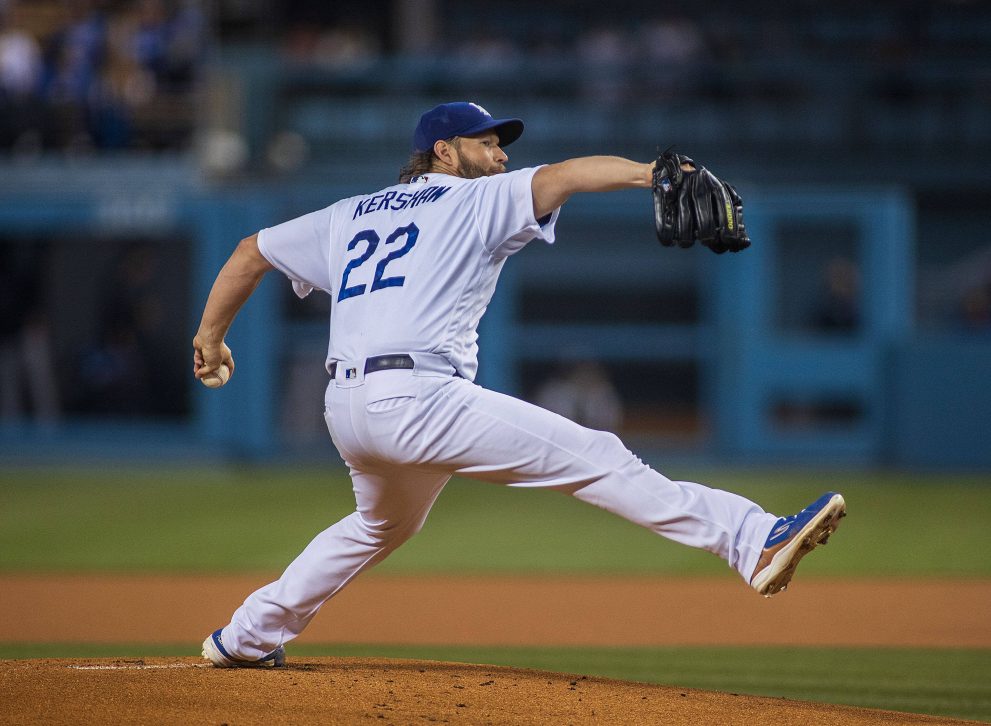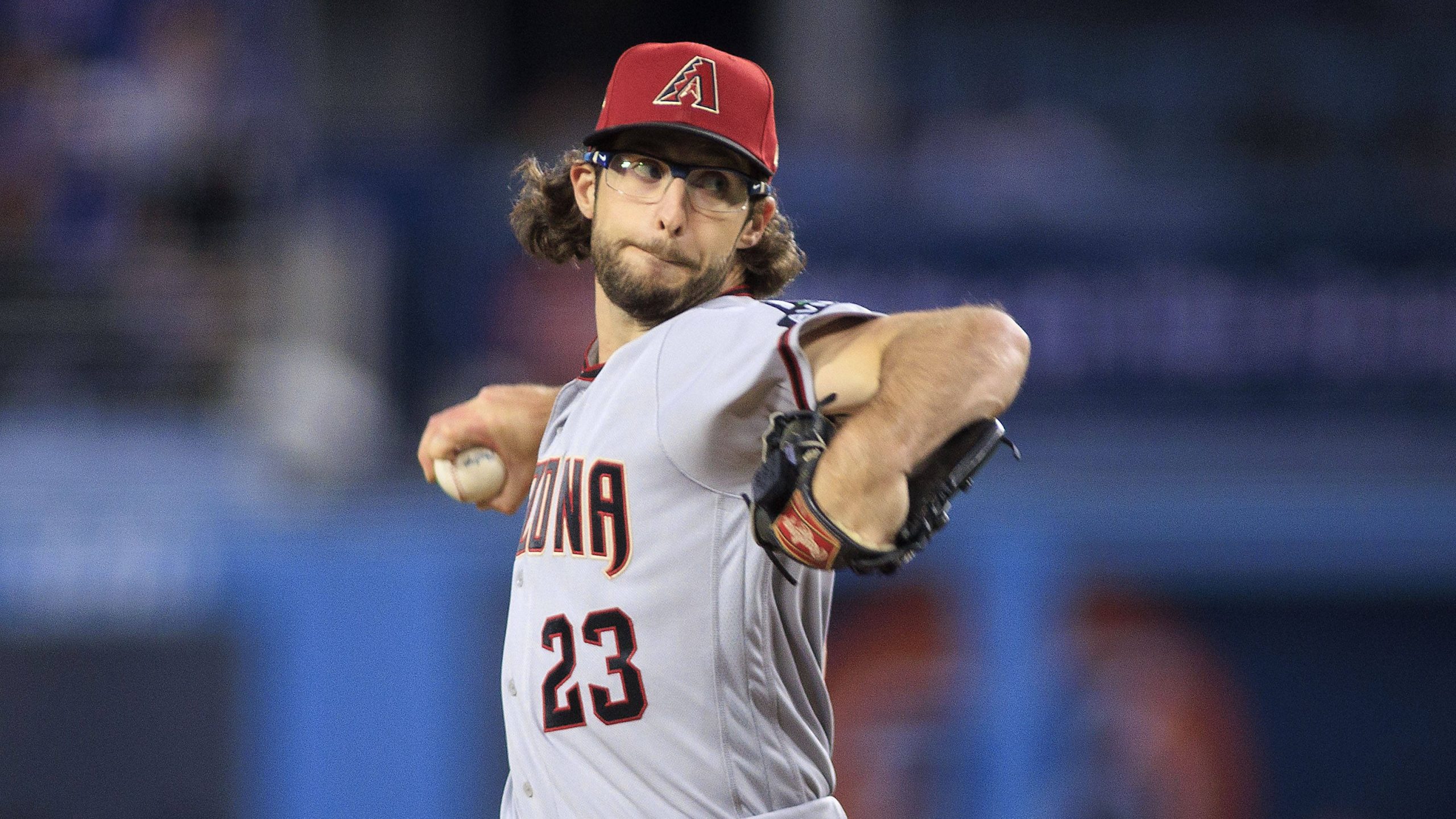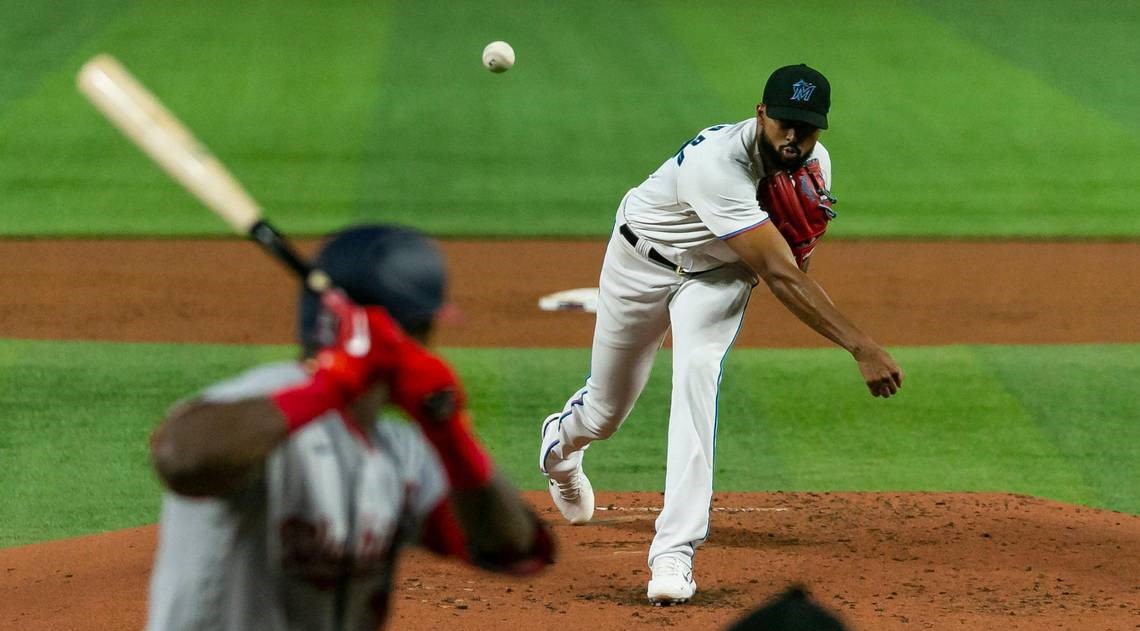A unique buzz filled the Boston Red Sox clubhouse late on the night of Sept. 1, 2007, when Clay Buchholz threw a no-hitter in a 10-0 win over the Baltimore Orioles.
The excitement of having witnessed and participated in a no-hitter was, of course, palpable. So was the wide-eyed wonder at the uniqueness of the feat by Buchholz, who was just the second pitcher to throw a no-hitter in his second big league appearance (Wilson Alvarez no-hit the Orioles on Aug. 11, 1991).
Also present in the postgame atmosphere: Defiance directed at Red Sox general manager Theo Epstein, who said following the no-hitter that Buchholz — a first-round draft pick in 2005 who’d never thrown more than seven innings or 100 pitches in a start — would have been lifted if his pitch count hit 120. Buchholz recorded the final out on pitch No. 115.
“We feel that we have a huge responsibility to this young kid,” Red Sox manager Terry Francona said. “But somebody else might have had to put a uniform and come take him out, because that would have been very difficult.”
Third baseman Mike Lowell was even more succinct
“He’s taking him out? My (rear end),” Lowell said.
The Red Sox’s universal reaction to Epstein’s proposed pitch limit for Buchholz popped to mind Wednesday, when Los Angeles Dodgers star Clayton Kershaw was pulled after throwing 80 pitches over seven perfect innings against the Minnesota Twins.
This time, instead of suggesting someone from the front office would have to head to the dugout and inform Kershaw he would not get a chance to complete his pursuit of perfection, Dodgers manager Dave Roberts asked Kershaw after the sixth inning if he wanted to exit then or pitch one more inning. None of Kershaw’s teammates tried to change Roberts’ mind or picked up a phone to place a furious phone call to a Dodgers executive sitting in a luxury suite at Target Field.
Following his perfect seventh inning, Kershaw grinned and walked off the mound. The smile never left his face as he exchanged handshakes, pats on the back and hugs with teammates before he headed down the tunnel to the Dodgers’ clubhouse, his day complete six outs away from the 24th perfect game in history.
.@alanhahn and @BartScott57 disagree on whether or not it was right to pull Clayton Kershaw amid his perfect game bid. pic.twitter.com/LXntqCjWy5
— ESPN Radio (@ESPNRadio) April 15, 2022
The perfect game bid ended with one out in the eighth, when Alex Vesia gave up a single to Gary Sanchez. It was the only hit surrendered by the Dodgers in a 7-0 win.
“Blame it on the lockout, blame it on me not picking up a baseball until January,” said Kershaw, who pitched just four times in the second half of last season and missed the playoffs due to a left forearm injury. He pitched 11 2/3 innings during the abbreviated spring training before tossing 75 pitches in a simulated game last week.
“My slider was horrible the last two innings. It didn’t have the bite. It was time.”
Kershaw’s measured reaction was particularly striking because the Hall of Fame-bound left-hander was renowned for his red, uhh, (rear end) as a 20-something. On Sept. 24, 2015, Kershaw had a heated exchange with Don Mattingly when the Dodgers manager pulled him after five innings and 80 pitches — both season-lows to that point — in order to pinch-hit for him with Los Angeles trailing the Arizona Diamondbacks 3-0.
The evolution of Kershaw from an impenetrable 27-year-old hot shot to a vulnerable 34-year-old is almost as fascinating as the increasing sense of acceptance by players and managers that pitchers are no longer guaranteed to get a chance to finish a no-hitter or perfect game.
Fergie Jenkins tells @thekapman his thoughts on Kershaw being pulled during perfect game… #shot #noshot Fergie would've finished? pic.twitter.com/2HzNEC4AWx
— Unfiltered with David Kaplan (@UnfilteredNBC) April 14, 2022
Kershaw was already the third pitcher this season pulled with a no-hitter intact. San Diego Padres manager Bob Melvin pulled Yu Darvish (six no-hit innings) and Sean Manaea (seven no-hit innings) in the first two games of the season against the Diamondbacks on Apr. 7 and Apr. 8.
What was once incomprehensible — a combined perfect game — is now beginning to feel like an inevitability. Kershaw is the seventh pitcher in history to be pulled after five or more perfect innings — and the sixth since the 2015 season. Kershaw was in the Dodgers’ dugout on Sept. 10, 2016, when Roberts pulled Rich Hill after seven perfect frames.
In addition, there’s the increasing possibility that a team will throw a perfect game started by an “opener” — a pitcher prescribed to only go one or two innings. The Tampa Bay Rays almost pulled that off on July 14, 2019, when Ryne Stanek (first two innings) and Ryan Yarbrough combined to retire the first 24 Orioles in a 4-1 win.
Kershaw’s Zen-like explanation of why he wasn’t allowed to finish the perfect game — he had no control over any of the possible reasons for his early exit — can apply to every other pitcher yanked in the midst of a potentially historic performance.
Executives who implement strict pitch counts at every level of their organization are also mapping out the plan for each game at the major league level. Teams are looking to either protect their investment for the future, in the case of Buchholz, or protect a player in whom they’ve made a sizable present-day investment. Kershaw signed a one-year, $17 million deal with the Dodgers after the lockout.
And analytics have allowed executives to underline how pitchers lose their effectiveness after two trips through the order. The Rays pulled Blake Snell after he faced his 18th batter against the Dodgers in Game 6 of the 2020 World Series even though he’d allowed just two hits and struck out nine. Snell exited with a 1-0 lead but Nick Anderson gave up the lead in eight pitches and the Dodgers never trailed again on their way to clinching the World Series.
The caution the Dodgers exercised Wednesday with Kershaw will look defensible if they win the World Series in late October or early November and/or if Kershaw ends up pitching several more seasons at a high level. But being pulled with perfection intact is still hard to comprehend for baseball fans who scramble for the remote upon learning of a perfect game bid and associate a perfect game with the most iconic individual single-game feat in sports.
Perfect games are why fans remember the names Mike Warren and Philip Humber, who combined for 25 big league wins. And perfect games also represent a pinnacle moment for those who enjoyed far longer and more decorated careers.
David Cone won a Cy Young and won five World Series championships, but his location on his Twitter account is listed as “P.G. 7-18-99” in honor of the perfect game he threw against the Montreal Expos on July 18, 1999. His banner photo pictures Cone standing with David Wells and the late Don Larsen, the only other New York Yankees pitchers to throw a perfect game.
And a perfect game is literally the only thing Kershaw — a three-time Cy Young Award winner and the 2014 National League MVP — hasn’t accomplished in a career that will earn him enshrinement in Cooperstown the moment he’s eligible. Of the six Hall of Famers to throw a perfect game, five — including Kershaw’s fellow Dodgers legend Sandy Koufax — have the achievement listed on their plaque.
“Maybe we get another chance, who knows?” Kershaw said Wednesday, when he was speaking as much for himself as everyone else.








